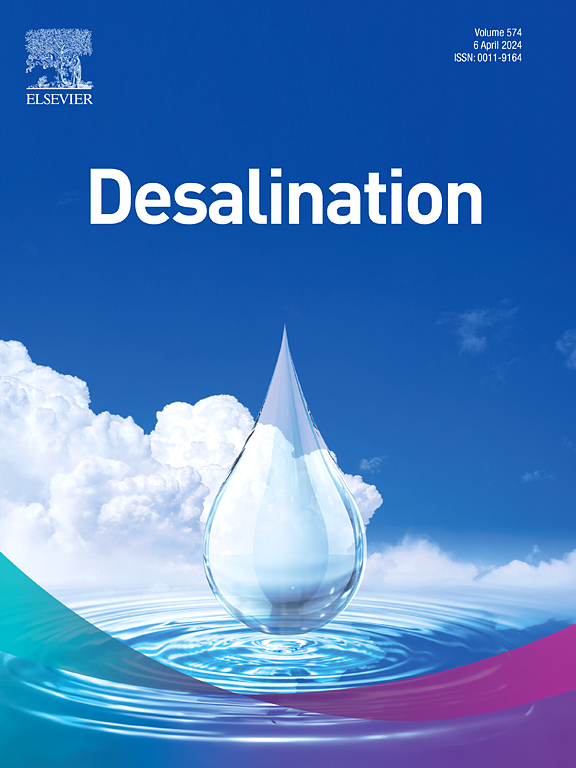A lignin-wood Janus membrane with three-dimensional interconnected layered micro/nano channels for on-demand separation of surfactant-stabilized oil/water emulsions
IF 8.3
1区 工程技术
Q1 ENGINEERING, CHEMICAL
引用次数: 0
Abstract
Oil/water emulsion wastewater is a typical industrial and domestic wastewater that is harmful to human health and the environment. However, it is still challenging to fabricate membrane materials for separating complex surfactant-stabilized oil/water emulsions from biomass in a facile and sustainable approach. Herein, paper industry waste lignin was prepared by self-assembly and hydrophobization into modified lignin nanospheres, which were sprayed onto delignified wood to develop a lignin-wood Janus membrane with superhydrophilic and superhydrophobic surfaces. The prepared Janus wood (JW) membrane maintains its selective wettability even under harsh conditions, demonstrating excellent durability and stability. Moreover, it can efficiently separate surfactant-stabilized oil-in-water (O/W) and water-in-oil (W/O) emulsions on demand, with a separation efficiency of >99 %. It is due to the distinct wettability and hierarchical structure of JW membranes, which feature three-dimensional interconnected layered micro/nano channels (tracheids and vessels) that enable multiple and continuous separation of oil/water emulsions. In addition, the JW membrane maintains a stable and efficient oil/water emulsion separation efficiency after 10 cycles, which offers an efficient, cost-effective, sustainable, and scalable approach for applications of all-wood-based separators in the oily wastewater treatment field.

求助全文
约1分钟内获得全文
求助全文
来源期刊

Desalination
工程技术-工程:化工
CiteScore
14.60
自引率
20.20%
发文量
619
审稿时长
41 days
期刊介绍:
Desalination is a scholarly journal that focuses on the field of desalination materials, processes, and associated technologies. It encompasses a wide range of disciplines and aims to publish exceptional papers in this area.
The journal invites submissions that explicitly revolve around water desalting and its applications to various sources such as seawater, groundwater, and wastewater. It particularly encourages research on diverse desalination methods including thermal, membrane, sorption, and hybrid processes.
By providing a platform for innovative studies, Desalination aims to advance the understanding and development of desalination technologies, promoting sustainable solutions for water scarcity challenges.
 求助内容:
求助内容: 应助结果提醒方式:
应助结果提醒方式:


